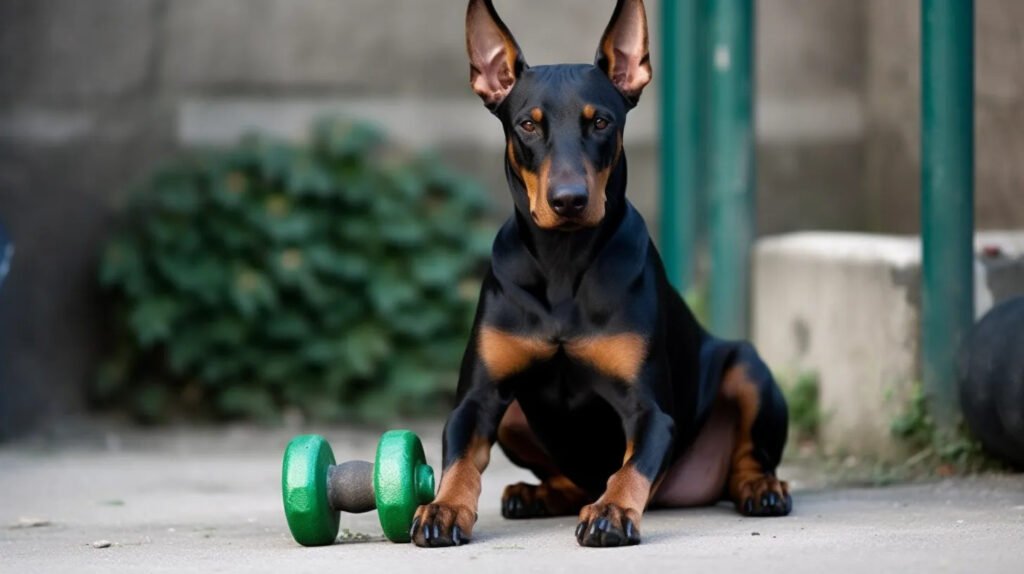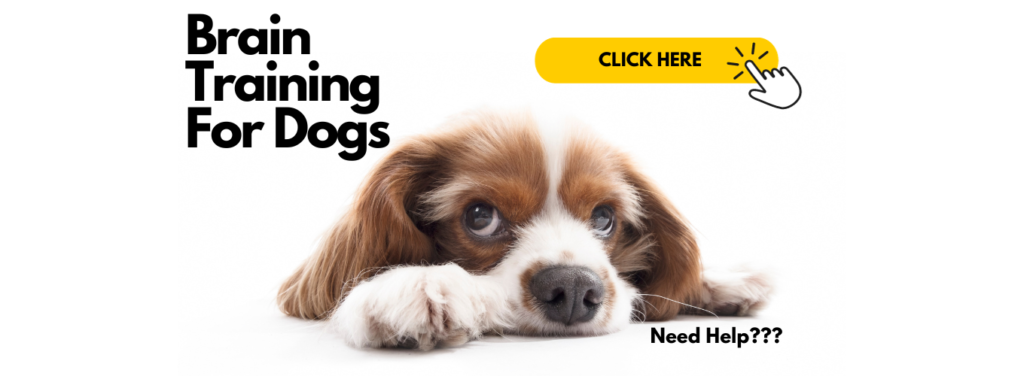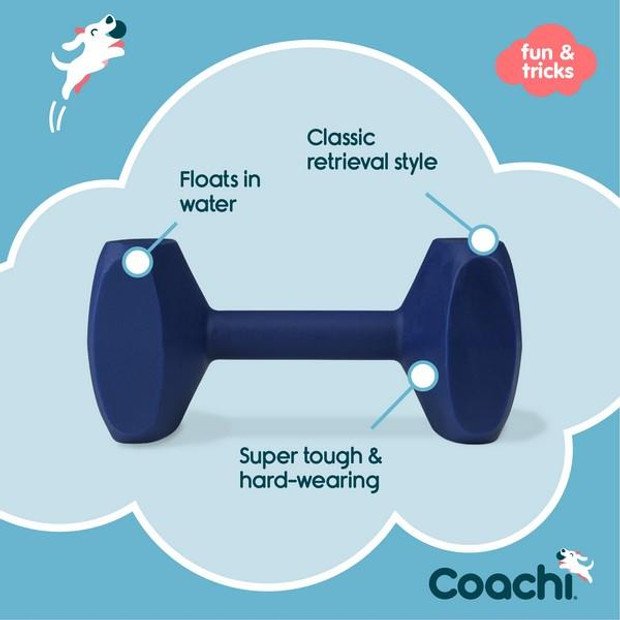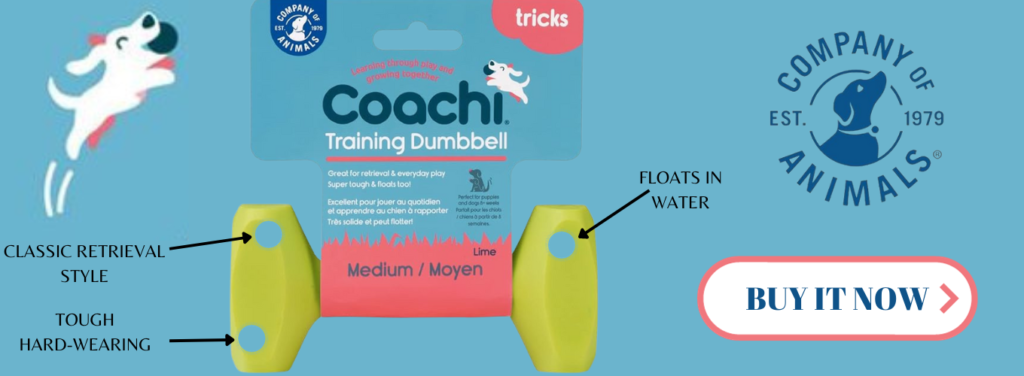
Step-by-Step Guide for Teaching ‘Fetch’ to dogs with dog Dumbbells
Teaching a dog to fetch and retrieve dumbbells is a fun and rewarding activity that can provide mental and physical stimulation for your furry friend. Whether you’re training for a competition or simply want to engage your dog in a new skill, this step-by-step guide will help you teach your dog the basics of fetch and build their retrieval skills. By following these techniques and troubleshooting common challenges, you’ll soon have a dog who can confidently fetch and retrieve dumbbells with ease.
Key Takeaways
- Choose the right size and material of dumbbell for your dog.
- Start with a fun game to get your dog excited about fetch.
- Introduce the dumbbell gradually, allowing your dog to become familiar with it.
- Teach the ‘fetch’ command using positive reinforcement.
- Gradually increase the distance of the fetch to challenge your dog.
Choosing the Right Dumbbell
Size Matters
When it comes to choosing the right dumbbell for your dog, size matters. You don’t want to overwhelm your furry friend with a dumbbell that’s too heavy or too large. Consider your dog’s size and strength when selecting the appropriate dumbbell. Additionally, material makes a difference. Opt for a durable and non-toxic material that can withstand your dog’s chewing and play. Lastly, consider your dog’s strength. Start with a lighter dumbbell and gradually increase the weight as your dog becomes more comfortable and confident. Remember, the goal is to have fun while teaching your dog to fetch and retrieve!
Material Makes a Difference
When it comes to choosing the right dumbbell for your dog, material makes a difference. Opt for a durable and non-toxic material that can withstand your dog’s chewing and play. Avoid materials that may pose a choking hazard or break easily. A popular choice is a rubber dumbbell, which is both sturdy and gentle on your dog’s teeth. Another option is a plastic dumbbell, which is lightweight and easy to clean. Remember, the right material can make all the difference in your dog’s training experience.
| Material | Pros | Cons |
| Rubber | Durable, gentle on teeth | May have a strong odor |
| Plastic | Lightweight, easy to clean | Less durable |
Keep in mind that each dog is unique, so consider your dog’s individual needs and preferences when choosing the right material for their dumbbell.
A dog’s dumbbell is not just a toy, it’s a tool for training and building strength. Choose wisely!
Consider Your Dog’s Strength
When choosing a dumbbell for your dog, it’s important to consider their strength. You don’t want to give them a dumbbell that’s too heavy for them to retrieve, but you also don’t want one that’s too light and won’t provide a challenge. Finding the right balance is key. Dharampal retrieve a dumbbell that is just right for his size and strength. It’s like the Goldilocks of dumbbells!
Teaching the Basics of Fetch
Start with a Fun Game
Before diving into the serious business of fetch training, it’s important to get your dog excited and ready to play. Start with a game of hide and seek, where you hide treats around the house and let your dog use their nose to find them. This will get their senses sharp and their energy levels up. Once they’re in the mood for some fun, introduce the dumbbell as a new toy to play with. Make sure to choose a dumbbell that is appropriate for your dog’s size and strength. Show them how to hold it in their mouth and give them lots of praise when they do it correctly. Remember, this is all about having fun, so don’t be afraid to get silly and make funny noises to keep your dog engaged. Now, let’s move on to teaching the ‘Fetch’ command.
| Fun Game Ideas |
| Hide and Seek |
| Tug of War |
| Fetch Races |
A tired dog is a good dog, so make sure to tire them out with plenty of playtime before starting the training session.
Introduce the Dumbbell
Once your dog is comfortable with the game of fetch, it’s time to introduce the dumbbell. This is where the real fun begins! Start by placing the dumbbell on the ground and encouraging your dog to investigate it. Use positive reinforcement to reward any interaction with the dumbbell. Gradually increase the level of engagement by having your dog pick up the dumbbell and hold it in their mouth. Remember to use the fetch command to encourage your dog to bring the dumbbell back to you. Remember, patience is key!
Teach the ‘Fetch’ Command
Once your dog understands the concept of bringing the dumbbell back to you, it’s time to teach them the command to fetch. This command will signal to your furry friend that it’s time to retrieve the dumbbell and bring it back to you. Use a clear and consistent verbal cue, such as ‘Fetch!’ or ‘Go get it!’ accompanied by a hand gesture pointing towards the dumbbell. Remember to reward your dog with treats and praise when they successfully retrieve the dumbbell. It may take some time and patience for your dog to fully grasp this command, so be sure to practice regularly and provide plenty of positive reinforcement.
Building Retrieval Skills
Gradual Increase in Distance
Now that your dog has mastered retrieving the dumbbell from a short distance, it’s time to step up the challenge. Start by gradually increasing the distance between you and the dumbbell. This will help your dog develop stronger focus and endurance. Remember to use positive reinforcement and reward your dog for successful retrievals. Don’t be surprised if your dog gets a little lazy and tries to cut corners. Keep them motivated by introducing fun obstacles along the way. You can even create a fetch obstacle course to make it more exciting. Just make sure to keep an eye on safety and supervise your dog closely. Remember, Rome wasn’t built in a day, and neither is your dog’s fetching skills! Keep practicing and soon your furry friend will be fetching dumbbells like a pro.
| Distance | Description |
| Short | Close to you |
| Medium | A few steps away |
| Long | Across the room |
Keep in mind that every dog is different, so adjust the distance based on your dog’s comfort and abilities.

Adding Distractions
Now that your dog is a pro at fetching the dumbbell, it’s time to up the ante and add some distractions into the mix. This will test your dog’s focus and obedience skills. Start by introducing simple distractions, such as toys or treats placed near the dumbbell. Gradually increase the level of difficulty by introducing more challenging distractions, like loud noises or other dogs playing nearby. Remember to stay patient and consistent with your training. Use positive reinforcement and rewards to motivate your dog to stay focused on retrieving the dumbbell. Keep a training documentation to track your dog’s progress and make adjustments as needed. With time and practice, your dog will become a master at fetching dumbbells even in the most distracting environments.
Rewarding Successful Retrievals
After your dog successfully retrieves the dumbbell, it’s time to celebrate! Show your excitement and give them lots of praise. You can also reward them with a tasty treat or a game of tug-of-war. Remember, positive reinforcement is key to reinforcing good behavior. Keep the training sessions short and fun, as dogs have a short attention span. Consistency is important, so make sure to reward successful retrievals every time. In addition, it’s a good idea to keep track of your dog’s progress. Create a table to record the number of successful retrievals and any challenges encountered. This will help you identify patterns and adjust your training approach accordingly. Lastly, don’t forget to take breaks and have fun with your furry friend!
Troubleshooting Common Challenges

Lack of Interest
If your dog shows little enthusiasm for fetching dumbbells, don’t fret! There are several strategies you can try to spark their interest. Variety is key, so mix up the type and size of dumbbells you use. You can also try incorporating treats into the game by hiding them near the dumbbell or using them as a reward for successful retrieves. Another idea is to make the game more challenging by introducing obstacles or playing in different locations. Remember, patience and persistence are key when it comes to training. Keep trying different techniques until you find what motivates your furry friend!
Dropping the Dumbbell
Dropping the dumbbell during a fetch session can be frustrating for both you and your dog. But fear not, there are ways to address this common challenge. First, make sure the dumbbell is the right size and weight for your dog. A too-heavy dumbbell can cause your dog to struggle and drop it. Second, reinforce the ‘hold’ command to ensure your dog has a firm grip on the dumbbell. Practice this command with a variety of objects to build your dog’s confidence. Additionally, consider using a retrieval toy instead of a dumbbell to keep your dog engaged and less likely to drop it. Remember, patience and consistency are key when teaching your dog to hold onto the dumbbell. Keep practicing and soon your dog will be a pro at fetch with dumbbells!
| Common Reasons for Dropping the Dumbbell |
| 1. Lack of proper grip |
| 2. Distractions in the environment |
| 3. Lack of motivation or interest |
| 4. Physical discomfort or pain |
Don’t let the dumbbell drop be a flop! Keep your dog’s grip strong and their fetch game on point.
Refusing to Release
Sometimes, dogs can be quite stubborn when it comes to letting go of the dumbbell. This can be frustrating for both the dog and the owner. However, patience is key in overcoming this challenge. One strategy you can try is to offer a tempting treat in exchange for the dumbbell. This creates a positive association and motivates the dog to release. Another technique is to gently squeeze the sides of the dog’s mouth to encourage them to open their jaws. Remember, never force the dog to release as it can lead to negative associations with the dumbbell. Take your time and be persistent, and eventually, your dog will learn to release the dumbbell on command.
| Common Challenge | Solution |
| Refusing to Release | Offer a tempting treat or gently squeeze the sides of the dog’s mouth to encourage release. |
Troubleshooting Common Challenges
Frequently Asked Questions

How do I choose the right size dumbbell for my dog?
When choosing a dumbbell size for your dog, consider their mouth size and strength. You want a dumbbell that they can comfortably hold and carry without straining their jaw or causing injury.
What material should the dumbbell be made of?
The material of the dumbbell is important for durability and safety. Look for a non-toxic and sturdy material such as rubber or plastic that can withstand chewing and rough play.
How can I determine my dog’s strength for choosing a dumbbell?
To determine your dog’s strength, consider their size, breed, and physical abilities. Start with a lighter dumbbell and gradually increase the weight as your dog becomes more comfortable and stronger.
How do I make fetch with dumbbells fun for my dog?
To make fetch with dumbbells fun for your dog, incorporate playfulness and rewards. Use enthusiastic and encouraging tones, play interactive games, and reward your dog with treats or praise when they successfully retrieve the dumbbell.
What should I do if my dog drops the dumbbell during fetch?
If your dog drops the dumbbell during fetch, calmly encourage them to pick it up again. Use positive reinforcement and reward them when they successfully pick up and hold the dumbbell.
How can I teach my dog to release the dumbbell after retrieving it?
To teach your dog to release the dumbbell, use the ‘drop it’ or ‘release’ command. Start by offering a treat or toy as a trade for the dumbbell, and gradually phase out the trade-off, rewarding your dog for willingly releasing the dumbbell.

